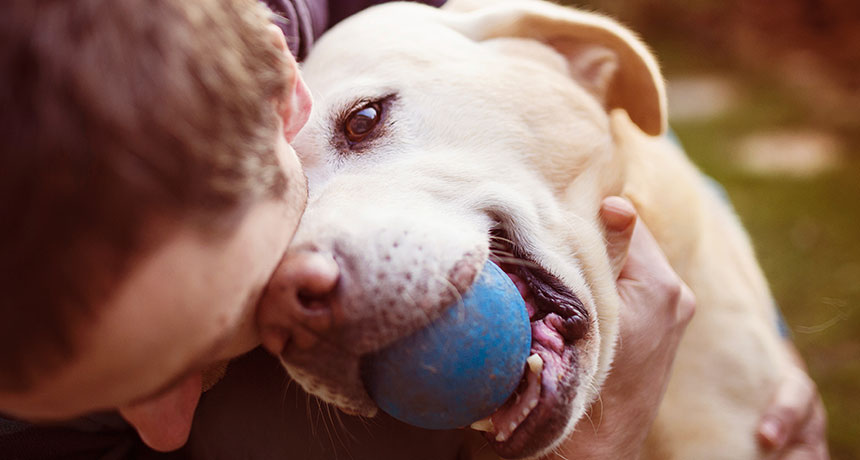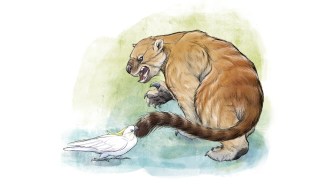DNA trail leads to new spot for dog domestication
Study points to Central Asia as place where canines and people became pals

FETCH Canine genetics show that dogs and humans might have first become pals in Central Asia.
Halfpoint/iStockphoto
- More than 2 years ago
Dogs first snuggled up with humans in Central Asia, a new study suggests.
The survey of canine genetic diversity contradicts previous findings about where dogs became domesticated, the researchers report October 19 in the Proceedings of the National Academy of Sciences.
“We have a large dataset,” says study coauthor Laura Shannon, an evolutionary geneticist at Cornell University who collaborated with an international team on the project. “We’ve gotten the chance to sample dogs from all over the world.”
Researchers compared 185,805 genetic markers from dogs, including purebreds, from 38 countries. The team found that Central Asia harbored the largest amount of diversity, pinning the original locale of domestication near present-day Nepal and Mongolia.
“As you move out from Central Asia we see a decrease in diversity,” Shannon says.
Rising genetic diversity marks a trail leading to domestication. Since only a subpopulation of the original group of domesticated dogs would have accompanied humans to a new area, those dogs would have a limited set of genes available to exchange. Similar to the neck on a soda bottle that restricts how much liquid gets through, only some genes would have accompanied the frontier dogs.
“There’s a loss of diversity associated with being domesticated,” Shannon says.
Earlier research has suggested that dog domestication occurred in places as varied as Europe, the Middle East, China, Siberia and North Africa. But many of these studies examined genetic material inherited from both mother and father, or just one or the other. The new study considered all three types of genetic information.
“Most of the previous studies looked at autosomal DNA, mitochondrial DNA, or the Y chromosome, and we were able to look at all three,” Shannon says. “That let us get the most complete picture we could.”
But one limitation of the study is its lack of ancient DNA analysis, leading some dog domestication researchers such as Robert Wayne of UCLA to question the results. Wayne, an evolutionary biologist, points to the conflicting results of earlier studies and says that diversity patterns in living dog populations might not be a foolproof map of domestication events in the distant past, either.
Shannon agrees that ancient DNA could provide more insight into where dogs became domesticated. The results from this study will contribute to an international effort using a variety of genetic techniques to investigate the origins of domestication in ancient dogs and wolves.
Studying domestication events adds to the human story, too, Shannon says. “Studying the history of organisms that we use and breed, and that we’ve had an effect on, tells us about history as well as culture and human migration.”







